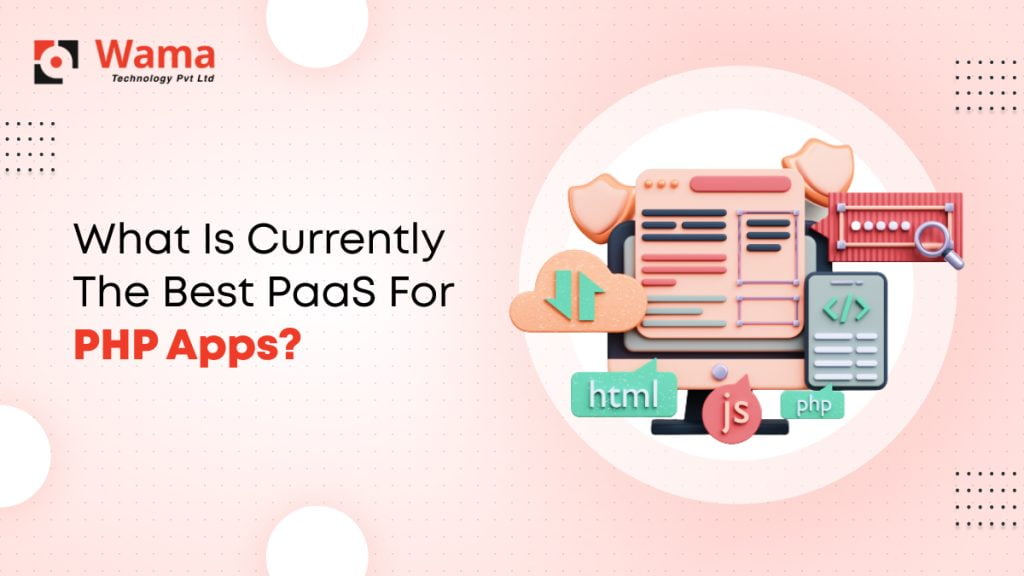What is currently the best PaaS for PHP apps?

Thanks to PaaS, businesses can quickly and easily install, provision, and run apps without investing in costly infrastructure upgrades. The cloud service provider is responsible for the underlying technical infrastructure while the business develops its application or uses one provided by the cloud service provider.
There is no shortage of PaaS options, but not all are created equal. Although most service providers offer the same core features, each service may have specialized add-ons or restrictions. Python, but not Java, may be supported by a PaaS service. Providers’ prices can also vary widely from one another. Before choosing a PaaS provider, carefully evaluate the options to select one that meets your demands. Here’s a rundown of 2023’s top Platform as a Service (PaaS) options for building PHP website applications.
- AWS Elastic Beanstalk
Amazon’s native Platform for deploying web apps is called AWS Elastic Beanstalk. The service supports Java, Microsoft.NET, PHP web development, Node.js, Python, Ruby, Go, and Docker. Servers like Apache, Nginx, Passenger, and Microsoft’s IIS can all host your code.
Like many of the other PaaS choices described here, Elastic Beanstalk is meant to function as a managed service that eliminates the need to set up infrastructure or make complicated customizations. Scaling, load balancing, health monitoring, and capacity provisioning are all managed mechanically. Amazon also enables the utilization of CPU measurements for elastic scaling of applications. Although Elastic Beanstalk is meant to function as a managed service, it also gives you access to the underlying infrastructure so you may make changes on your own, such as setting up a workload to run on a specific EC2 instance type.
- Engine Yard
If you’re looking for a way to streamline your AWS workflow, go no further than Engine Yard, a fully managed DevOps platform that simplifies the process down to just writing code and pushing it to a remote repository. Containerizing the application and deploying it to a Kubernetes cluster are both difficult processes, but Engine Yard takes care of all that for you.
Engine Yard takes care of the grunt work involved in administering Kubernetes and other low-level duties like patch management, backups, and auto-scaling an application according to its performance needs. Grafana, integrated with Engine Yard hosted applications, gives fundamental metrics on system resources. Engine Yard can also send out notifications in the event of an application failure or other event.
- Google Cloud
Organizations can create their apps using Google’s serverless App Engine platform. Node.js, Java, C#, Go, Python, and PHP are all supported on Google’s fully managed App Engine. Google allows users to utilize any library or framework via containerization, even if it isn’t one of the officially supported languages.
Google App Engine allows developers to create apps without worrying about the system architecture. Organizations may scale their applications without intervening in the underlying infrastructure or performing complicated configuration tasks thanks to the serverless Platform, which is fully managed.
- Heroku
Heroku operates on a container-based platform as a service (PaaS) model. Heroku’s dynos are application containers, and the Platform takes care of the underlying infrastructure so developers can focus on writing code. Logging, security, failover, and orchestration are all part of this. The response times of containers and their applications can be tracked using available metrics.
Not only may applications take advantage of Heroku’s PostgreSQL service, but they can also use any of Heroku’s many available extensions. Heroku also supports key-value data stores that operate entirely within memory.
- Microsoft Azure Pipelines
Like many other hyper scalers, Microsoft Azure offers a wide range of features that fit the bill for the Platform as a service. Microsoft Azure Pipelines is an example of such a service. The Azure Pipelines platform is highly adaptable. It supports various programming languages and frameworks, including Node.js, Python, Java, PHP, Ruby, C/C++, and Microsoft. NET. You can simultaneously launch multiple applications on Windows, Linux, and MacOS. The program also facilitates the creation of apps for both iOS and Android.
Despite its name, Azure Pipelines is compatible with Azure, Amazon Web Services (AWS), and Google Cloud Platform. You can create and publish images to container registries like Docker Hub with the help of this service.
- Red Hat OpenShift
Another Kubernetes-based PaaS choice is Red Hat OpenShift. OpenShift’s primary goal is to speed up web application development for businesses and automate Kubernetes. Directly from the application’s code to a container is possible with the help of the software’s source-to-image capabilities.
In addition to its numerous benefits, Red Hat OpenShift’s management dashboard makes it simple to monitor and control several Kubernetes instances simultaneously. OpenShift is also built to deliver the same experience regardless of the underlying operating system.
What are the Benefits of Using PaaS?
PaaS helps its users, often developers, by making their lives easier. PaaS lessens the need for IT administration. It streamlines or completely does away with the need for manual upkeep. The difficulties of growing and spreading services that rely on others are eliminated. As a result, businesses can take advantage of cutting-edge products and services without completely restructuring their operations.
Let’s pretend you’re interested in opening an online shop. You can only do this with a framework written in PHP or another language. A database server, such as MySQL Server or MariaDB, is required to store your data. Your online shop can only be up and running with a server.
Customers of PaaS only pay for the resources they use, thanks to the service’s “Pay-As-You-Go” pricing model. Because of this, individuals and even smaller businesses can benefit from structured software php development and features.
Conclusion
PHP PaaS, as its name suggests, is a service that allows for creating and distributing software in an online environment. As proven by the thousands of delighted customers it has garnered, Wama Technology is one of the leading PHP development companies in the USA. The company enables users to create and deploy apps easily.